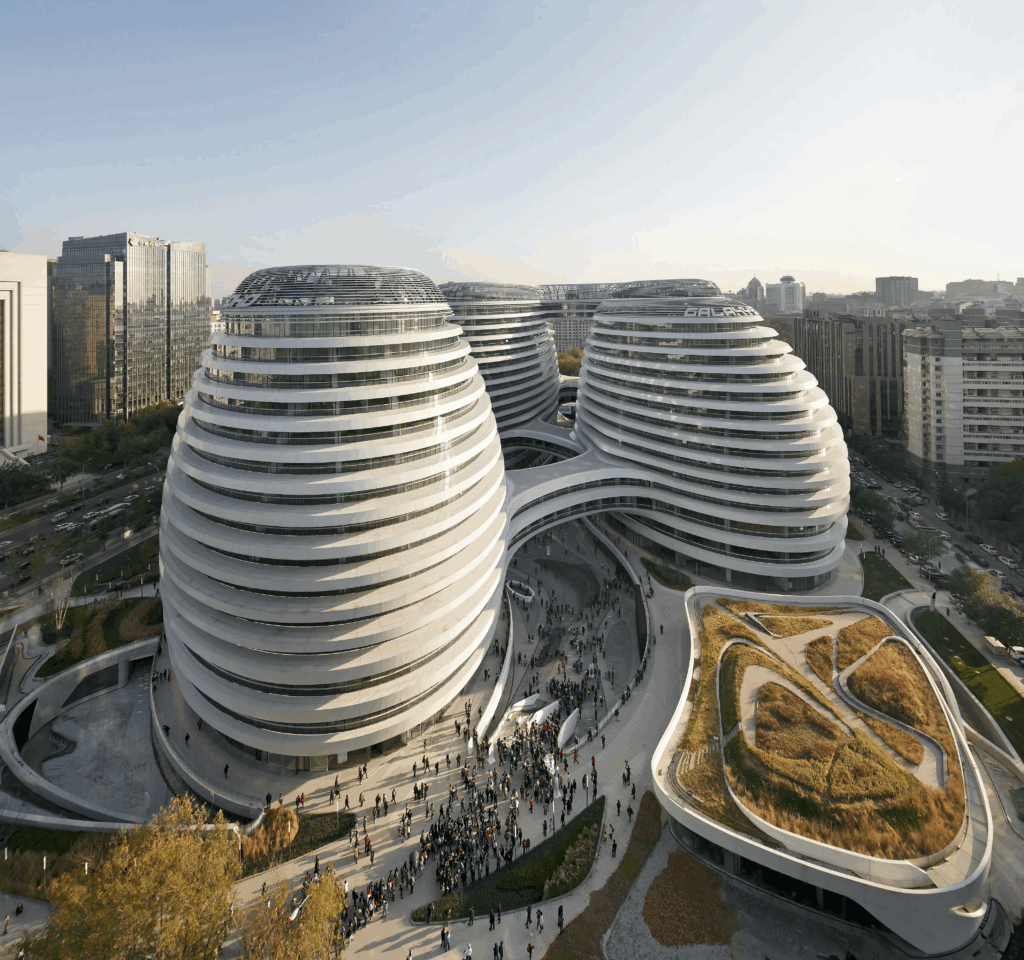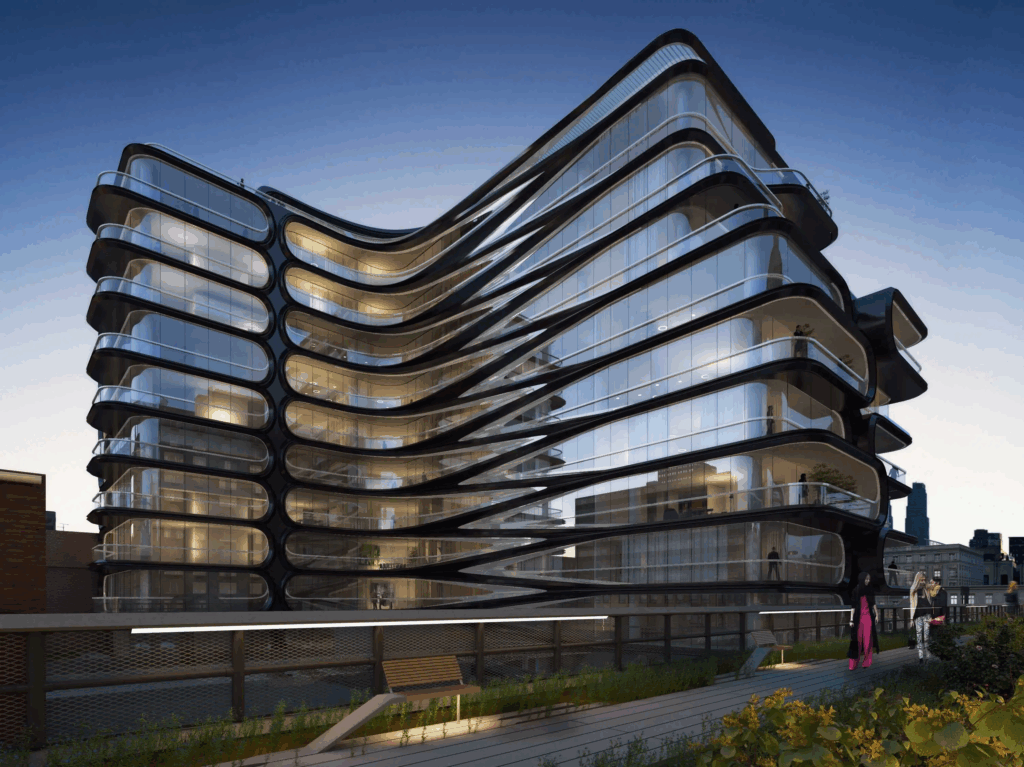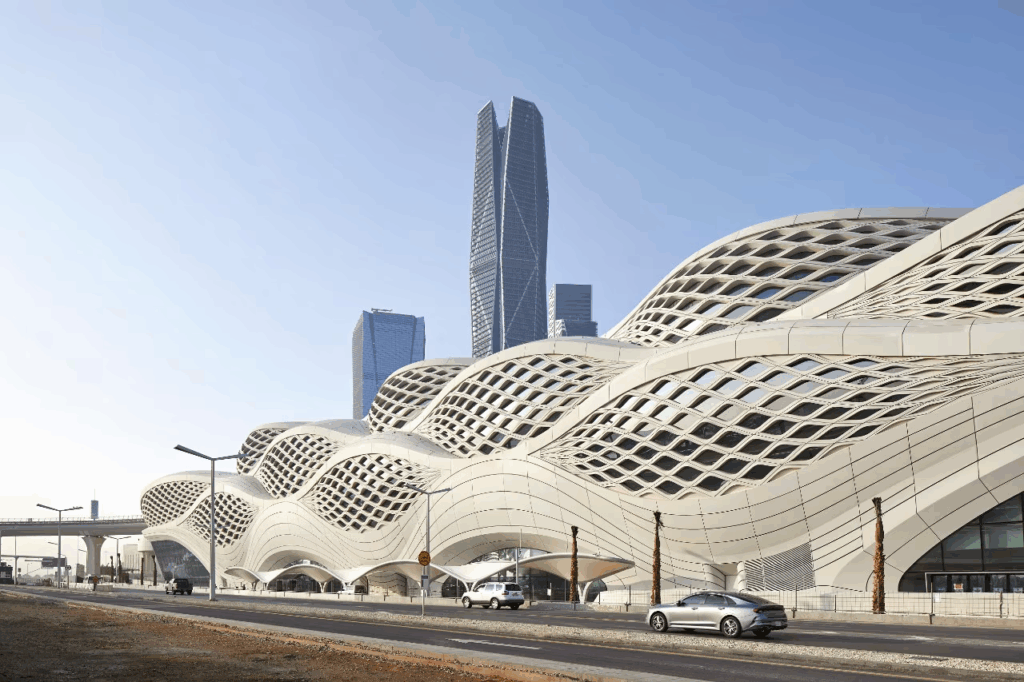Zaha Hadid was more than an architect — she was a force of nature.
Born in Baghdad in 1950 and later based in London, she became the first woman to win the Pritzker Architecture Prize and the leading figure of a new, fluid form of design that transformed skylines across the world.

Her buildings bend, twist, and ripple like sculptures in motion. Through digital innovation and fearless experimentation, Zaha Hadid reinvented what architecture could be.
Early Life and Education
Zaha Mohammad Hadid was born into a cosmopolitan Iraqi family that valued culture and progress. Her father was an industrialist and politician, her mother an artist. From childhood, she was fascinated by geometry and the natural curves of landscapes and rivers — forms that would later appear in her designs.
She first studied mathematics at the American University of Beirut, believing logic and proportion were the foundation of all art. In 1972, she moved to London to study at the Architectural Association School, a creative incubator for the most radical ideas of the time.
There, Hadid’s imagination flourished. She was mentored by Rem Koolhaas and became known for her bold, abstract drawings — dynamic compositions that seemed impossible to build. But she was determined to make them real.
The Birth of a New Architecture
In 1979, she founded Zaha Hadid Architects (ZHA) in London. For years, many of her projects remained on paper because her ideas were considered too complex. But she persisted, combining mathematics, art, and engineering into something unprecedented.
Her architecture broke away from the rigid grid of modernism. Instead, she embraced fluidity, motion, and transformation. She believed buildings should reflect the energy of contemporary life — the speed of cities, the movement of people, and the flow of digital information.
With the rise of computer-aided design in the 1990s, her concepts finally found their medium. Using advanced modeling software, her team could translate those impossible sketches into buildable structures.
Key Works That Defined a Generation
Vitra Fire Station (Germany, 1993)
Hadid’s first major built work — all sharp angles and dynamic lines — gave architecture a new sense of speed and tension. It looked more like a sculpture captured mid-explosion than a building.
MAXXI Museum (Rome, 2010)
The National Museum of 21st-Century Arts flows like a river of concrete and light. Its intersecting pathways dissolve the boundary between walls, ceilings, and floors. It’s not a static space — it moves with the visitor.
Heydar Aliyev Center (Baku, 2013)
Perhaps her most iconic creation, this building appears to rise from the ground in one continuous wave. Its seamless curves and white surfaces evoke freedom and openness — a true expression of Hadid’s vision for architecture as art.
London Aquatics Centre (2012 Olympics)
The sweeping roof of this aquatic center was inspired by the fluid geometry of water in motion. It’s both graceful and functional, housing Olympic pools beneath a breathtaking canopy.
Dongdaemun Design Plaza (Seoul, 2014)
A fusion of culture, technology, and urban energy, this futuristic structure glows like a silver river at night. It symbolizes the digital age — architecture that adapts and evolves.
Architectural Philosophy

Zaha Hadid’s philosophy was rooted in movement. She saw architecture as a continuation of nature — not static, but living, flowing, and changing.
She once said, “There are 360 degrees, so why stick to one?”
This refusal to conform defined her entire career.
Her buildings often reject straight lines and corners, embracing curves inspired by wind, waves, and the human body. She was also a pioneer of parametric design, using algorithms and 3D modeling to shape buildings with mathematical precision and organic beauty.
Legacy and Impact

Zaha Hadid passed away suddenly in 2016, but her influence remains immense. Her firm, Zaha Hadid Architects, continues to push the boundaries of design with projects like the Beijing Daxing Airport and the King Abdullah Financial District Metro Station in Riyadh.
She paved the way for women in architecture, proving that creativity and leadership know no gender. In 2016, she became the first woman to receive the Royal Gold Medal from the Royal Institute of British Architects.
Today, her work defines a new generation of architects who merge art, science, and computation. Her buildings are not just spaces — they are experiences, designed to make people feel movement, emotion, and wonder.
Why Zaha Hadid Still Matters
In a world of repetitive skylines and corporate boxes, Zaha Hadid’s architecture stands as a reminder that imagination is still the greatest material of all. Her buildings breathe life into cities and challenge the limits of engineering.
She proved that architecture can be visionary and human at the same time — daring, emotional, and timeless. Her legacy continues to inspire those who believe that buildings, like people, should never stop evolving.



